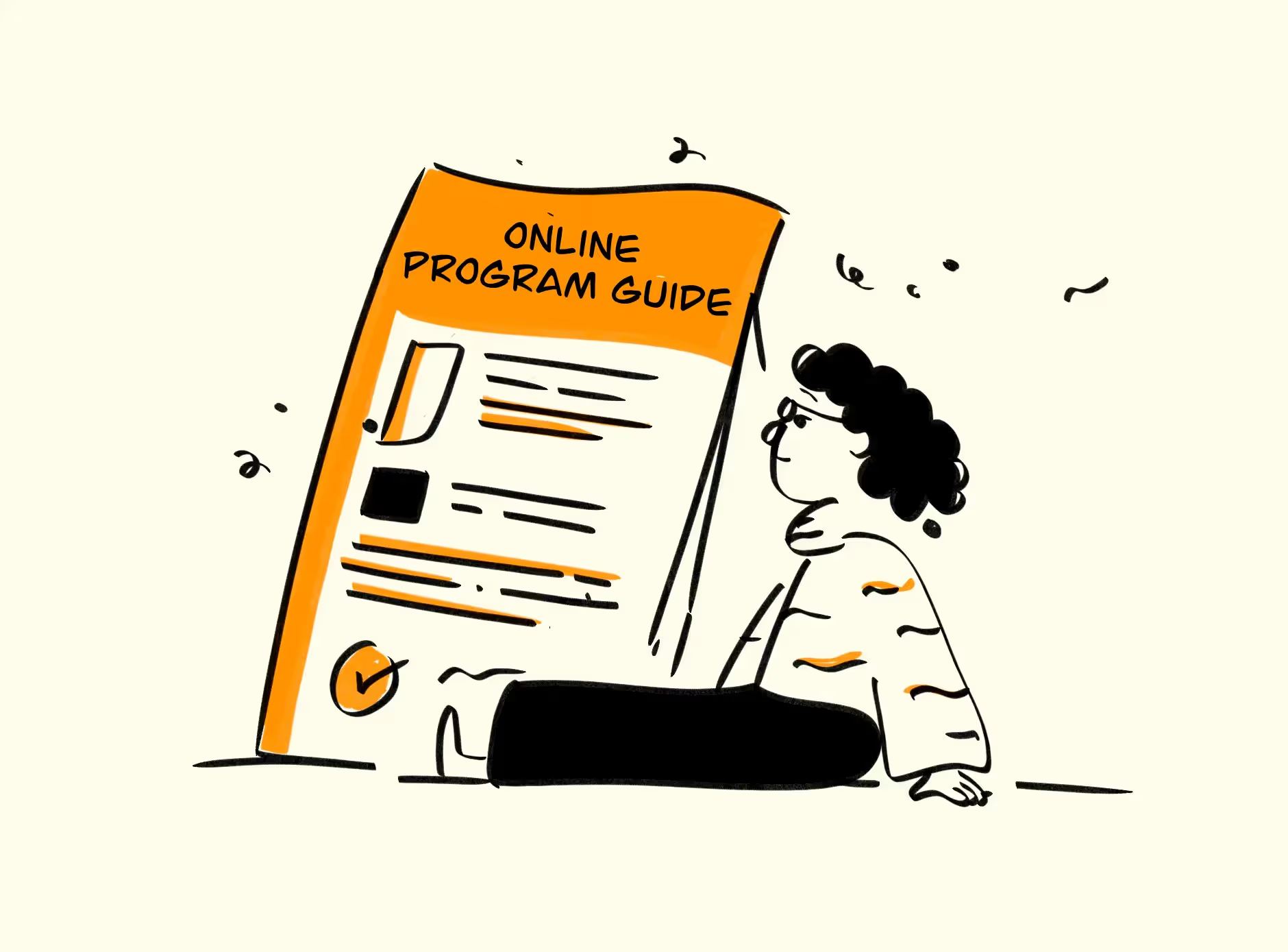


Key Takeaways
Introduction
If you're looking to craft a winning online course landing page, you've come to the right place! In this blog, we'll guide you through the tips and best practices that will help you design an effective landing page that attracts and converts potential clients. With the right marketing strategy and design, you can showcase your online courses and encourage visitors to sign up. So, let's dive in and explore the magical world of online course landing pages!
Understanding the Purpose of Your Online Course Landing Page
So, you’ve created an online course, and you’re excited to share your knowledge with the world. But, how do you convince people to take your course? That’s where a winning landing page comes in.
Your online course landing page is one of the most crucial parts of your marketing strategy. Not only does it showcase what you have to offer, but it also helps potential customers understand why your course is important.
1. Identify the Importance of Your Course
Start by identifying why your online course is important and how it adds value to your target audience. Consider the knowledge, skills, or transformation participants can expect to gain from taking your course. Clearly articulate the unique selling points that differentiate your course from others in the market.
2. Define the Problem Your Course Solves
Every successful course addresses a specific problem or challenge faced by its target audience. Identify the pain points or gaps in knowledge that your course aims to solve. Clearly communicate how your course provides the solution and empowers participants to overcome these challenges effectively.
3. Determine the Desired Action
What is the primary action you want visitors to take on your landing page? Do you want them to sign up for a free trial, enroll in the course, or join a waiting list? Defining the desired action will help you design a persuasive landing page that guides visitors towards taking that specific action. Keep this goal in mind throughout the design process.
4. Craft a Clear and Concise Message
Once you have established the purpose of your landing page, craft a clear and concise message that aligns with that purpose. Use compelling and benefit-driven language to communicate the value of your course. Focus on addressing the pain points and emphasizing the outcomes participants can expect to achieve by enrolling in your course.
How AI Can Help You Create a Winning Online Course Landing Page
Landing Page Prompt
"Create a landing page for a course named [Course Name]. The course is about [Course Topic] and is designed to take students from beginner to advanced levels. The course offers a comprehensive learning experience, lifetime access to course materials, and is packed with practical, actionable items. The tone of the landing page should be [Desired Tone] and the style should be [Desired Style]."
You can replace the placeholders in brackets with your specific details. For example
"Create a landing page for a course named 'Mastering Digital Marketing'. The course is about digital marketing strategies and is designed to take students from beginner to advanced levels. The course offers a comprehensive learning experience, lifetime access to course materials, and is packed with practical, actionable items. The tone of the landing page should be optimistic and the style should be persuasive."
Tips for Designing an Effective Online Course Landing Page
Your landing page is the first impression that a potential student has of your online course. It is essential to create a page with a design that is both visually appealing and user-friendly, that will capture their attention, and pique their interest. So, how do you create a landing page that is effective in converting visitors into students? The following tips will help you design your landing page with the right elements to achieve sales.
1. Identify Your Target Audience
Before designing your landing page, have a clear understanding of your target audience. Consider their demographics, interests, and motivations. This knowledge will help you tailor your messaging and design to resonate with them effectively.
2. Choose the Right Platform
Select a user-friendly and customizable platform for creating your landing page. There are various website builders and landing page tools available, such as WordPress, Wix, or Leadpages. Choose one that offers the features and flexibility you need to design a visually appealing and functional landing page.
3. Consider Your Branding
Ensure that your landing page reflects your brand identity. Use consistent colors, fonts, and imagery that align with your overall branding. This creates a cohesive and professional look that builds trust with your audience.
4. Focus on Course Benefits
Highlight the benefits and outcomes participants can expect from taking your course. Clearly communicate how your course will help solve their problems, acquire new skills, or achieve their goals. Use concise and persuasive language to emphasize the value they will gain.
5. Attention-Grabbing Headlines
Craft attention-grabbing headlines that capture visitors' attention and make them want to learn more. Use compelling language and make it clear how your course stands out from the competition. Consider using subheadings or bullet points to highlight key features and advantages.
6. Incorporate Multimedia Content
Include engaging multimedia content, such as videos or interactive elements, to enhance the user experience. Videos can provide an overview of your course or feature testimonials from past participants. Visual content helps break up text and keeps visitors engaged.
7. Create a Clear Call-to-Action (CTA)
Design a clear and prominent call-to-action that stands out on your landing page. Use action-oriented language, such as "Enroll Now" or "Start Learning Today." Make sure your CTA button is visually distinct and easily clickable. Consider placing it strategically throughout the page to increase the chances of conversion.
8. Use Testimonials and Social Proof
Include testimonials from satisfied participants to build trust and credibility. Testimonials provide social proof and demonstrate the value and effectiveness of your course. Incorporate ratings, reviews, or case studies to further strengthen your credibility.
9. Align Design Elements with the Purpose
The design elements on your landing page should align with the purpose and message of your online course. Use colors, fonts, and visuals that evoke the desired emotions and reflect the tone of your course. Incorporate relevant imagery or illustrations that resonate with your target audience and support the overall message.
10. Mobile-Friendly Design
Optimize your landing page for mobile devices since a significant number of users browse the internet on their smartphones or tablets. Ensure that your landing page is responsive and displays properly on different screen sizes. Test the mobile version to guarantee a seamless user experience.
11. A/B Testing and Optimization
Continuously test different elements of your landing page, such as headlines, visuals, CTAs, and layout, to optimize its performance. Use A/B testing to compare variations and gather data on what resonates best with your audience. Make data-driven decisions to improve conversion rates over time.
Best Practices for Creating a Winning Course Landing Page
When it comes to designing your course landing page, there are a few best practices that you should keep in mind to optimize its effectiveness. A winning landing page is one that is well-designed, easy to navigate, and highly targeted to your audience's needs. Here's what you need to do:
1. Keep it Simple and Uncluttered
Create a clean and uncluttered design for your landing page. Avoid overwhelming visitors with excessive text or visual elements. Use white space strategically to make the content more readable and visually appealing. A simple layout ensures that the key elements and benefits of your course stand out.
2. Use High-Quality Images and Graphics
Incorporate high-quality images and graphics that are relevant to your course topic. Visuals play a crucial role in capturing visitors' attention and conveying the essence of your course. Use professional images, illustrations, or infographics that enhance the overall visual appeal and reflect the quality of your course.
3. Incorporate Social Proof
Include social proof elements on your landing page to build trust and credibility. Display testimonials from satisfied students or industry experts who endorse your course. Showcase any awards, certifications, or affiliations that demonstrate the value and reliability of your course. Social proof reinforces the perception that your course is reputable and worth enrolling in.
4. Prioritize Mobile Responsiveness
With an increasing number of people accessing the internet on mobile devices, it's crucial to prioritize mobile responsiveness. Ensure that your landing page is optimized to display correctly and function seamlessly on smartphones and tablets. Test its performance across various devices and screen sizes to provide a positive user experience for all visitors.
5. Ensure Fast Load Times
Optimize your landing page to load quickly. Visitors are more likely to leave a page if it takes too long to load. Compress images, minimize code, and leverage caching techniques to improve load times. A fast-loading landing page not only improves user experience but also positively impacts search engine rankings.
6. Optimize for Search Engines
Implement basic search engine optimization (SEO) practices to increase your landing page's visibility in search engine results. Research and use relevant keywords related to your course within the page content, headings, and meta tags. This helps search engines understand the relevance of your landing page and improves its chances of appearing in relevant search queries.
7. Craft Compelling Headlines and Subheadings
Create compelling headlines and subheadings that capture visitors' attention and communicate the unique value proposition of your course. Use persuasive language and highlight the key benefits or outcomes participants can expect. Well-crafted headings guide visitors through the page and encourage them to explore further.
8. Include a Brief Course Overview
Provide a concise and engaging overview of your course. Summarize the main topics, modules, or lessons participants will cover. Clearly communicate the value and benefits of your course and how it addresses their needs. A brief course overview helps visitors quickly understand what they will gain from enrolling.
9. Implement Clear Navigation
Ensure that your landing page has clear and intuitive navigation. Visitors should easily find essential information, such as course details, pricing, and FAQs. Use a logical structure and well-labeled navigation menus or links to guide visitors smoothly through the page. An intuitive navigation system enhances the user experience and keeps visitors engaged.
All of these best practices are critical when it comes to creating a winning course landing page. Make sure you pay attention to all of them to create a highly effective, targeted, and compelling landing page that will drive your visitors to take action. Remember, a well-designed landing page can make all the difference between high and low conversions.
The Importance of Course Descriptions and Previews
Crafting compelling course descriptions and previews is a crucial element in creating a winning online course landing page. It allows potential students to understand what they can expect from the course and decide if it aligns with their goals.
1. Captivating Course Descriptions
Course descriptions play a crucial role in capturing visitors' attention and providing a clear understanding of what your course offers. Craft compelling and concise descriptions that highlight the unique value proposition, key topics covered, and the skills or knowledge participants will gain. Use persuasive language to communicate the benefits and outcomes of taking the course. A well-written course description helps visitors determine if the course aligns with their needs and interests.
2. Addressing Pain Points
Effective course descriptions address the pain points or challenges faced by your target audience. Clearly articulate how your course provides solutions or offers valuable insights that address those pain points. By understanding and addressing the specific needs of your audience, you can create course descriptions that resonate with them on a deeper level, making them more likely to enroll.
3. Showcasing Course Content
Including previews or samples of your course content can be a powerful tool for enticing visitors to sign up. Provide a glimpse of the high-quality content participants will have access to. This can be in the form of video snippets, downloadable resources, or excerpts from course materials. By showcasing the value and quality of your course content, you build trust and demonstrate that your course is worth investing in.
4. Establishing Expertise and Credibility
Course descriptions should establish your expertise and credibility in the subject matter. Share your qualifications, industry experience, or any relevant achievements to build trust and confidence in your potential students. Highlight any partnerships or affiliations that demonstrate the quality and legitimacy of your course. Establishing yourself as an expert in the field boosts your credibility and encourages visitors to choose your course over others.
5. Aligning Course Descriptions with Landing Page Messaging
Ensure that your course descriptions align with the messaging and branding of your landing page. Consistency in language, tone, and design elements creates a cohesive user experience. When visitors read the course description, they should feel a seamless transition from the landing page, reinforcing the value and professionalism of your offerings.
6. Creating a Sense of Excitement and Anticipation
Craft course descriptions that generate excitement and anticipation among potential students. Use compelling language to create a sense of curiosity and interest. Emphasize the unique aspects and benefits of your course to build anticipation for the learning experience. A well-crafted description can leave visitors excited and eager to enroll in your course.
7. Encouraging User Engagement and Feedback
Consider incorporating interactive elements within your course description or landing page that encourage user engagement. This could include a feedback or comment section where potential students can ask questions or share their thoughts. User engagement fosters a sense of community and establishes a connection between you and your audience, making them more likely to enroll in your course.
8. Optimizing for Search Engines
Optimize your course descriptions with relevant keywords to improve their visibility in search engine results. Conduct keyword research to identify the terms and phrases commonly used by your target audience. Incorporate these keywords naturally throughout your course descriptions to enhance search engine optimization (SEO) and increase the chances of your course being discovered by potential students.
Conclusion
Congratulations, you’ve made it to the end of our Tips and Best Practices for Creating a Winning Online Course Landing Page. In summary, we’ve learned that creating a landing page that converts requires careful thought and consideration. You need to identify your target audience, select the right platform, focus on branding, use attention-grabbing headlines and incorporate multimedia content.
Additionally, it’s important to keep things simple and uncluttered, use high-quality images, and optimize your landing page for mobile devices and search engines. Incorporating social proof, fast load times and clear calls-to-action are also essential.
Above all, ensure that you craft a compelling course description that highlights the benefits of your course and previews of your course content. By following these tips and best practices, you’ll be able to create a winning online course landing page that successfully converts visitors into paying customers or engaged learners.
So, what are you waiting for? Get started today and see how EdisonOS can help you design stunning landing pages and even better online courses! Remember, testing is crucial, so always analyze your landing page’s performance and make adjustments as needed. Happy designing!

Recommended Reads
Recommended Reads











.png)
.webp)
